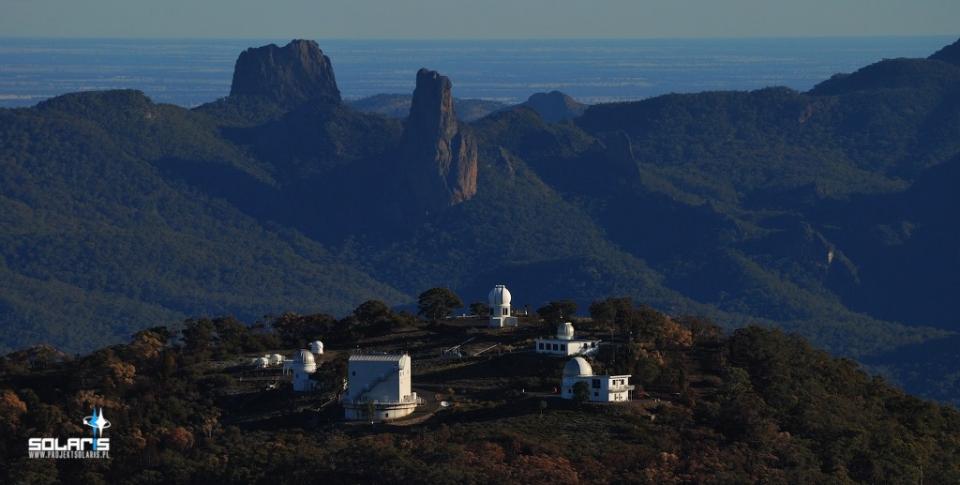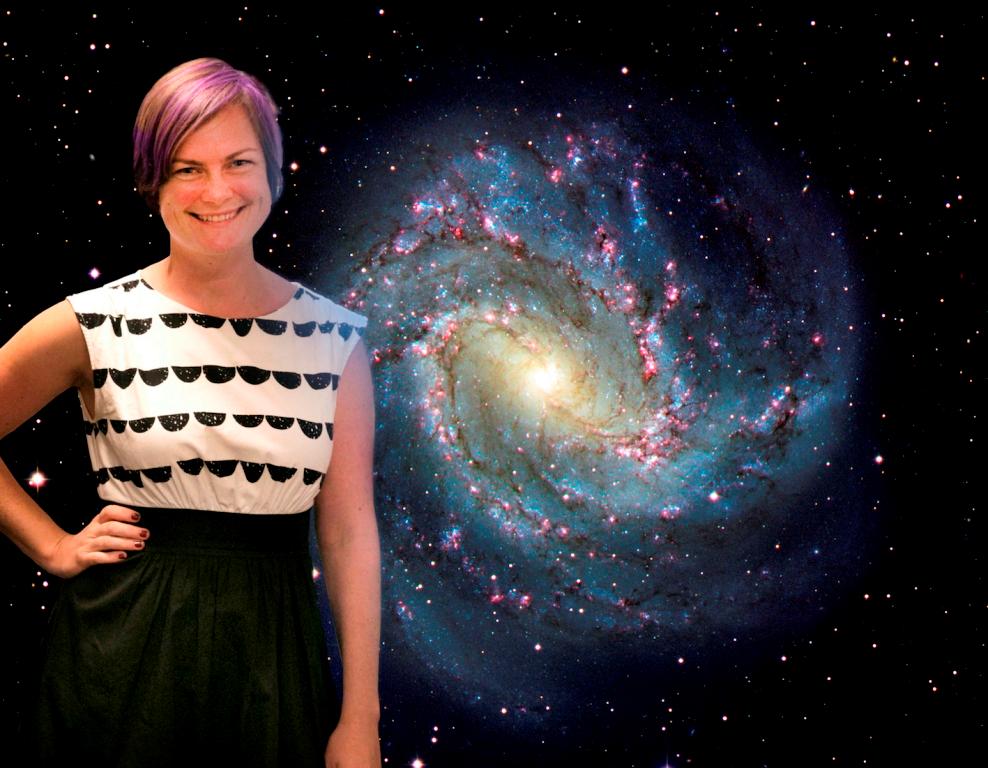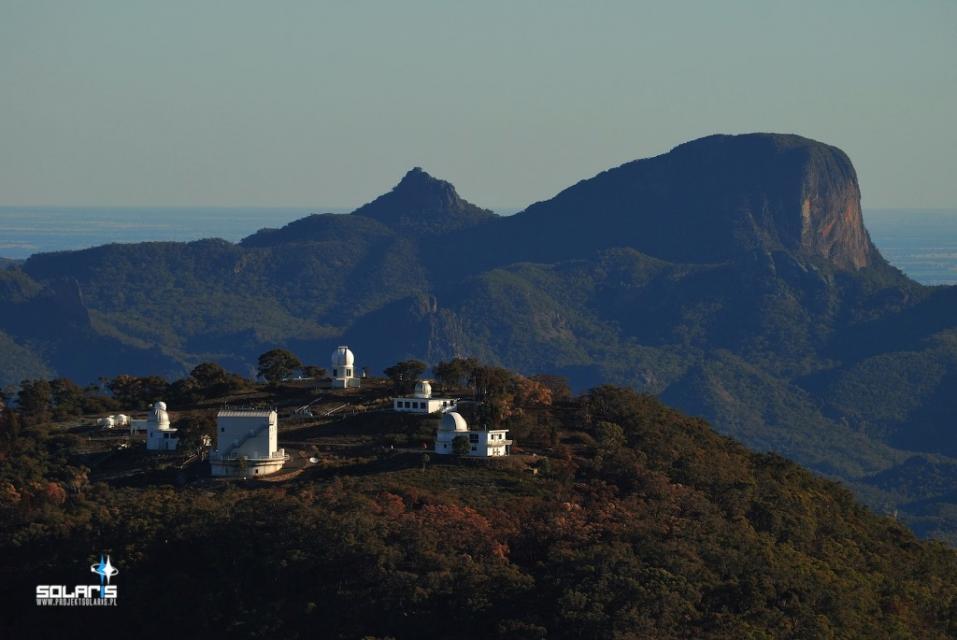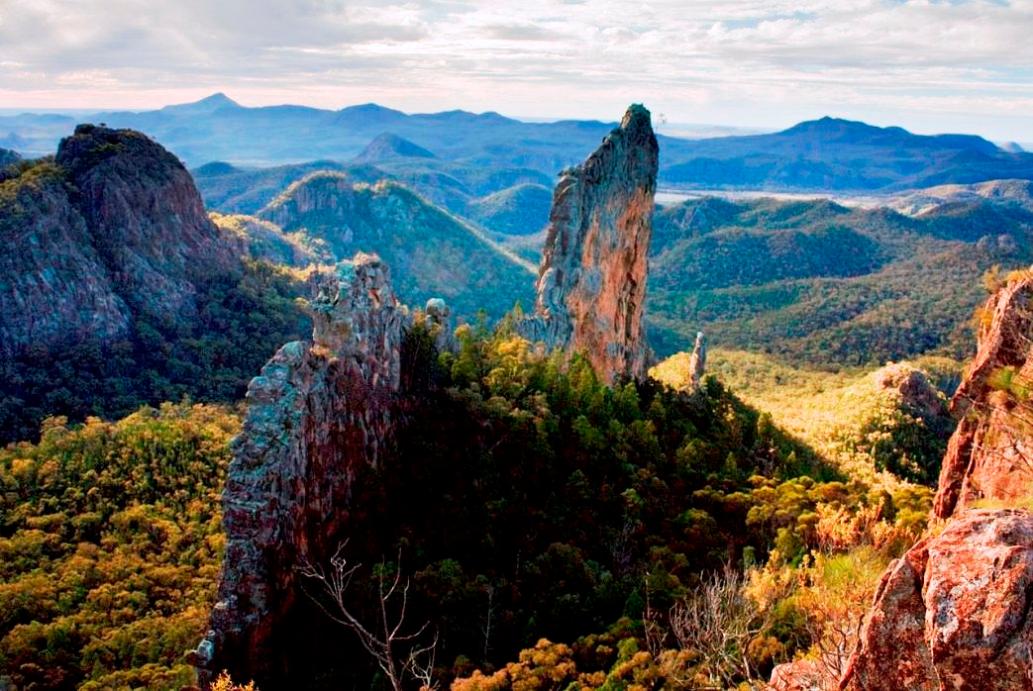The 2018 CWAS AstroFest
"The David Malin Awards"

The 2018 CWAS AstroFest
"The David Malin Awards"
In July 2018, the Central West Astronomical Society's astrophotography competition was held again as part of the CWAS AstroFest. Amateur astronomers and photographers from around Australia were invited to take part in the exhibition and to submit their astrophotographs for consideration in the prestigious "David Malin Awards".
This year's competition had eight categories:
- Deep Sky
- Wide-Field
- Nightscapes
- Solar System
- Animated Sequences: Scientific and Aesthetic
- Themed Section - "Revealing the Colours of the Stars"
- Junior (18 years old and younger)
The photographs were judged by world-renowned astrophotographer, Dr David Malin, without David being aware of the identity of the photographers. The winners were presented with the "David Malin Awards" in the presence of invited dignitaries, during the CWAS AstroFest conference on 14 July 2018. The dignitaries included Dame Jocelyn Bell-Burnell, Cr Ken Keith (Mayor of Parkes Shire Council), Alan Brightman (General Manager - Sunstudios, Canon Australia), Dr Fred Watson (AAO) and Dr Andrew Jacob (Sydney Observatory).

L-R: Dr David Malin, Christine Speers (CWAS President), Dame Jocelyn Bell-Burnell, Cr Ken Keith (Parkes Mayor) and John Sarkissian. Photo © Maggi Barnard
It was not just technical skill that was awarded. The prizes went to pictures that captured the beauty of the sky and the intrinsic interest of astronomy in an aesthetically pleasing manner. Canon Australia supported the competition with Estore Voucher prizes to the value of $10,000.
Mr Jeff Darmanin, a News Corp. Picture Editor, judged the "Photo Editor's Choice" awards and gave his pick from each category. His overall winner was awarded the Photo Editor's Choice Award.
Last year's exhibitions were a resounding success. The two parallel exhibitions were viewed by over 200,000 people Australia-wide.
This year's permanent exhibition will be on show at the CSIRO Parkes Observatory's Visitor's Centre for one year from 15 July 2018. A second touring exhibition, organised by the Museum of Applied Arts and Sciences, will travel to selected venues, beginning with Sydney Observatory on 6 September 2018.
To have received any one of these awards is a great honour. Congratulations!
The Competition - Category Winners
Winner: Luke Tscharke
Nightscapes
OVERALL WINNER "Crescent Moon at Lake Oberon"
Citation: "This is absolutely beautiful in all respects, to my eye at least, and is one of the finest night-time landscape images I have ever seen. The texture of the foreground and silhouetted outlines of the background hills add to dramatic depth of the scene, and the curved shoreline of the lake and the Milky Way complete a moonlit mountain landscape. Superb!"
Luke's winning image was of a crescent moon at Lake Oberon in Tasmania was taken last year while he was on assignment as a photographer for Australian Geographic, where he set out to walk in the footsteps of the brilliant wilderness photographer Peter Dombrovskis.

Supplied: © Luke Tscharke/David Malin Awards
Winner: Peter Ward
Deep Sky
"E lucevan le stelle"
Citation: "A meandering band of colour appears suspended among the stars, forming the diagonal in this striking image of faint nebulosity. The stars are tiny and the delicate structure in the nebula was captured in a nine-hour exposure, with colours reassembled in the popular "Hubble Palette"."

Supplied: © Peter Ward/David Malin Awards
Winner: Stefan Buda
Solar System
"Colours of Serenity and Tranquillity"
Citation: "I was very impressed with this as a piece of abstract art. This photograph of the lunar surface is a nine-panel mosaic taken near full moon. The flat lighting allows the subtle natural colours to be exaggerated in processing to reveal the Moon's varied chemical composition."

Supplied: © Stefan Buda/David Malin Awards
Winner: Tom Elliott
Wide-Field
"Barrenjoey Milky Way Arch"
Citation: "A location I'm very familiar with takes on a new identity beneath the stars of the Milky Way. While some of the joins in the 38-image panorama are evident, the overall visual effect is powerful."

Supplied: ©Tom Elliott/David Malin Awards
Winner: Ian Inverarity
Theme - "Revealing the Colours of the Stars"
"Old Wagon and Neon Lights"
Citation: "This is a remarkable image, ornamenting a coloured, out of-focus background of star trails with a strongly textured and strangely illuminated foreground. It certainly reveals the star colours clearly, and suggests many other photographic possibilities for this kind of approach."

Supplied: ©Ian Inverarity/David Malin Awards
Joint Winner: Phil Hart
Animated Sequences - Aesthetic
"Yukon Aurora"
Citation: "Lovely! The music sets the mood well and is not overpowering. Well chosen and linked footage, beautiful twilight cloud sequences, seen in good and varied locations."
Cape Bruny Nights from James Stone on Vimeo.
The Photo Editor's Choice


About the Central West Astronomical Society
On Friday, 1 February 2002, the Parkes Radio Observatory played host to the inaugural meeting of The Central West Astronomical Society. Amateur astronomers from all parts of the Central West of NSW attended the meeting. People from as far afield as Parkes, Forbes, Orange, Canowindra, Dubbo, Narromine, Trundle, Bogan Gate, Tichbourne and Cookamidgera attended. In addition, three visiting Melbourne University students made it a national event.
Dr. John Reynolds, the Officer-in-Charge of the Parkes Observatory, welcomed the members and expressed his support for the society and its aims. The society in turn expressed its gratitude to Dr. Reynolds for his support and goodwill in allowing the meetings to be held at the Observatory with the magnificent Parkes Dish as a backdrop.
The Central West of NSW is a vast area, boasting some of the darkest skies in NSW. In addition to the many private observatories, the region is host to numerous professional astronomical facilities, such as the Parkes Radio Observatory, the AAO and Siding Springs Observatories to the north, and the Mt. Stromlo Observatory and the Tidbinbilla tracking station to the south.
Remarkably, a society did not exist to cater for the needs and aspirations of the large numbers of people in the region who are fascinated with the night sky. Recognising this need, a group of amateur astronomers from the district; John Sarkissian, Chris Toohey, Alex Abbey, Peter Cannon and Jim Buckley, got together and founded the long overdue society.
The society meets on the FIRST Friday of every month at the Parkes Observatory Visitor's Centre from 7:30 pm.
People of all ages and experience are welcome to attend these monthly meetings. No prior knowledge of astronomy nor ownership of a telescope are required. Only a keen interest in, and an enthusiam for astronomy and the night sky, are all that is required.
The monthly meetings, include a regular program of guest speakers, films, discussions and observing reports. In addition, separate monthly observing nights enable members to interact and pass on their observing skills and knowledge of the night sky.
Since its inception, the Society has grown in leaps and bounds. In addition to the many great speakers that regularly address the Society, the public outreach activities of the CWAS have increased in scope and stature.
In 2004, the CWAS AstroFest was inaugurated as the main fundraising and public outreach activity of the Society. It has been phenomenally successful. Also in 2004, the "David Malin Awards" were inaugurated as part of the AstroFest. Today it is recognised as the premier event of its kind in Australia. The following year in 2005, the associated touring exhibition was begun and last year 110,000 people viewed the exhibition in seven venues in three States and the ACT.
In 2007, a search was initiated for a permanent dark sky site for the Society's regular monthly viewing nights. It is planned that an observatory and club house will be built at the site to further our aims.
We look forward to meeting many new members and to further encourage and promote amateur astronomy in the Central West.
For further information contact the Secretary
Clear Skies!
Visit: http://www.cwas.org.au/
Previously: July 10 - 16, 2016: Issue 271
Warrumbungle First Dark Sky Park In Australia
05.07.2016: Ministerial Media Release - The Hon. Rob Stokes MP, Minister for PlanningWarrumbungle National Park in Central Western NSW has been declared Australia’s first Dark Sky Park, recognising and protecting its key role in astronomical research. Planning Minister Rob Stokes and Environment Minister Mark Speakman welcomed the park’s new status, following confirmation from the International Dark Sky Association.
Mr Stokes said the park’s dark sky qualities will be protected with $100,000 in funding to control light pollution through implementation of updated planning policies. A new Dark Sky Planning Guideline has also been developed with the Australian Astronomical Observatory as part of the NSW Government’s review of state planning policies. “Warrumbungle National Park has long been recognised not only for its beauty at ground level, but also for the wonder it holds in the night sky above,” Mr Stokes said. “It’s an outstanding place to view the night sky and, with the nearby Siding Spring Observatory, plays an important role in Australian astronomical research. “As nearby communities grow, it’s important we plan to protect the park’s dark sky qualities from light pollution now and into the future.”
SSO Telescopes showing surrounding landscape - picture courtesy Australian National University (ANU)
Mr Speakman said the Dark Sky Park’s status would benefit the environment as well as stargazers. “Light pollution has a detrimental effect not only on professional and amateur astronomy, but it also impacts on those parts of the ecosystem, such as nocturnal animals, which are reliant on dark night skies,” Mr Speakman said. Member for Barwon Kevin Humphries welcomed the Dark Sky Park declaration.“Warrumbungle National Park is a place our local community has always treasured, and I’m delighted it’s now been recognised in this way,” Mr Humphries said. Australian Astronomical Observatory Head of Lighting and Environment Professor Fred Watson led the nomination for the Warrumbungle National Park to be Australia’s first Dark Sky Park. “I am thrilled with the new Dark Sky status, which will give central western NSW the opportunity to educate and exemplify the benefits of dark skies and the use of sky-friendly lighting,” Professor Watson said. Warrumbungle National Park joins other international parks such as Death Valley National Park in the United States and Galloway Forest Park in Scotland as officially designated Dark Sky Parks.
Siding Spring Observatory - Eyes On The Sky

Published on 18 Jul 2014 by Aussie PeteThis video tour shows the Siding Spring Observatory and its surrounds. Created to showcase SSO for Starfest Open Day 2014.
StarFest 2016 Dates And All Events
This year StarFest will held over the October long weekend (Sep 30 - Oct 2). www.starfest.org.au/
Siding Spring StarFest celebration will be held on the weekend of the 1st of October 2016.
Open Day: October 1st 2016 – 9:30am till 4pmCan’t make Open Day but would like to see the talks? We will be streaming the talks live on the day.Where?Siding Spring Observatory (we will have the Mud Map and Program closer to the day to help you plan your day). Remember to pick up your What’s On booklet on the day!
There’s a whole day of activities – view the Mud Maps for Open Day, (will be available closer to the day).*Tour the telescopes*Hear talks by world famous astronomers in the AAT Dome (see Talks Program 2016 AAT)*Talks designed for children in the Exploratory (see Childrens Talks Program 2016)*Enjoy activities for the whole family (see the full Program for more details closer to the day)*See the science displays*Eat at the newly refurbished Exploratory cafe, or grab a sausage sizzle on the way round*And much much more
Parking; There’s tons of it – drive on inDo I Have To Book: No! Just rock on up – we would love to see you!
The Life and Times of our Milky Way Galaxy with Dr Amanda Bauer When: Sunday October 2nd, 2016 – 11:00 amWhere: Coonabarabran Bowling ClubWho: Dr Amanda Bauer!
Dr Amanda Bauer is an Astronomer and Outreach Officer for the Australian Astronomical Observatory. In 2015, she was named in the “Top 5 Under 40” among Australian Science Communicators and Researchers and received the Australian Institute of Physics NSW Community Outreach to Physics Award. Amanda uses earth-based and orbiting space telescopes to explore variations in how galaxies formed, how they lived their lives, and how they evolved into the diverse array of galaxy species we see today. You can find her online as @astropixie at http://amandabauer.blogspot.com/.What is the Subject?“The Life and Times of our Milky Way Galaxy”What will happen to our Milky Way Galaxy when it inevitably crashes into the titanic Andromeda galaxy? A lot of change! But no need to worry about this cosmic disaster during our lifetimes, though, as the head-on collision will not occur for another 4 billion years. This presentation takes the audience through the story of our Galaxy, from its formation soon after the Big Bang, to the distant future when the stars are no longer burning. The Milky Way Galaxy is an exciting place to call home!
SeatingTo book your seats is free but a gold coin donation is appreciated on the day - all donations to the NSW Volunteer Rescue Association (VRA))Book your seats at Sticky Tickets now!
Dr Amanda Bauer - photo by Glen Gagelsm
Siding Spring Observatory (SSO), on the edge of the Warrumbungle National Park near Coonabarabran, NSW, is Australia's premier optical and infrared observatory.
The Australian National University’s Research School of Astronomy and Astrophysics (RSAA) operates its research telescopes, and hosts those of other institutions at this spectacular location next to the picturesque Warrumbungle National Park. You can learn more about the various telescopes and organisations that own and run them on the telescopes of SSO http://rsaa.anu.edu.au/observatories/telescopes page.
ANU Telescopes showing Warumbungle National Park - picture courtesy Australian National University (ANU)
SSO is a working research facility and as such it has no public star-gazing facilities. The Observatory and its surrounds are closed to the general public from 4pm each day.
There are, however, a range of activities for visitors to the observatory, including:• A visitor centre with informative and educational displays about telescopes and astronomy.• Access to the viewing gallery of the Anglo-Australian Telescope, which is run by the Australian Astronomical Observatory (AAO)• Spectacular views of the Warrumbungle National Park• A cafe and shop at the visitor centre that is stocked with great food and gift ideas. Morning and afternoon teas and light lunches are available - contact us for group pricing.• Our annual StarFest celebration is held in October. You can meet our astronomers and discover more about the observatory and the science that we do here.• School holiday activities, including guided walking tours of the observatory and talks by astronomers and scientists.• Tours for groups of all ages can be organised on request. Please contact the visitor centre in advance for pricing and availability. A minimum group size of 15 applies for all tours.• View upcoming events and activities at SSO on the activities page.
Email us for information about our school education programs, or Ask an Astronomer a question about astronomy or telescopes.From Australian National University: Research School of Astronomy & Astrophysics, ANU College of Physical & Mathematical Sciences: http://rsaa.anu.edu.au/observatories/siding-spring-observatory
The Siding Spring Exploratory houses a small astronomy exhibition area with hands on activities for the whole family. Enjoy a great coffee, lunch or a snack at the Exploratory café and browse the wonderful variety of souvenirs and gifts available.
The Australian Astronomical Observatory houses the Anglo-Australian Telescope which is the largest telescope in Australia. The AAT is an impressive two storeys high and holds a 3.9m, 16 ton ceramic glass mirror. Inside this massive dome is a visitor viewing gallery open to the public and free of charge. From the gallery you can see the telescope and read about its history and the discoveries it has made.
Behind the AAO building is a lookout which over looks the iconic Warrumbungle National Park. Take a moment to view the natural beauty of the landscape surrounding Siding Spring Observatory.
Opening hoursOpen 7 Days during NSW School Holidays except Good Friday, Christmas Day and Boxing DayOutside of school holidays;Tuesday to Friday: 9:30am to 4pmSaturday and Public Holidays: 10am to 4pmClosed Sunday and Monday
During times of Severe Fire Danger (or higher) and extreme weather events, the observatory will be closed to visitors.Please call us for more information on opening times.The weather here can be quite variable. It can be quite warm or at the other extreme quite cool. Sunscreen, a hat, water and a warm coat/jacket are advisable.Please note: Siding Spring Observatory (SSO) is a working research facility and as such we are not open at night for public viewing. Siding Spring Observatory is closed to the general public after 4pm.
The Warrumbungles
The Warrumbungles are a mountain range in the Orana region of New South Wales, Australia. The nearest town is Coonabarabran. The area is easiest accessed from the Newell Highway which is the major road link directly between Melbourne, Victoria and Brisbane, Queensland and cuts across inland New South Wales from the north to the south.
As the range is between the moist eastern coastal zone and the dryer plains to the west, it has provided protection for flora and fauna suited to both habitats. There are over 120 bird species identified on the range, including lories and lorikeets, rosellas and parrots. The centre of the range has served as an area of protection for a healthy and content colony of grey kangaroos. These animals have become fairly tame due to constant visitor attention and are easily approached.
The Siding Spring Observatory is on an eastern peak. The area has little light pollution to disturb astronomical viewing. The Warrumbungles hosted the 2006 World Rogaining Championships.
The base of the region was formed 180 million years ago. At that time a lake was formed that allowed sediment to slowly compress into sandstone. The Warrumbungles are the remnants of a large heavily-eroded shield volcano which was active from 13 to 17 million years ago. The volcano is estimated to have been 1,000 metres (3,300 ft) high and 50 kilometres (31 mi) wide. It formed as volcanic explosions occurred over millions of years. The remaining complex rocky formations are what is left after millions of years of erosion.
PhysiographyThis area is also known as the Warrumbungle-Liverpool Basalt Ranges, which is distinct physiographic section of the larger Hunter-Hawkesbury Sunkland province, which in turn is part of the larger East Australian Cordillera physiographic division.
The main features of the Warrumbungle mountains are a series of huge jagged outcrops in a roughly circular pattern, surrounded by hilly bush and woodland forest. Dykes, plugs and domes are common and mostly made from trachyte. The Grand High Tops is a section of the range where volcanic remnants are especially clustered. These vents and rocky formations are all named - Belougery Spire, Belougery Split Rock, Crater Bluff, Bluff Mountain, The Breadknife and Mount Exmouth. Pyroclastic rock is found in this area. The Breadknife, a straight wall of jagged rock nearly 100 metres (330 ft) high, is particularly rare. There is an extensive network of nine walking tracks across the central peaks.
Towards the southeast a broad belt of basalt outcrops extends towards the Liverpool Range. Near Chalk Mountain are outcrops of diatomite. Outer stretches of the volcano are made up of hawaiite and mugearite.
HistoryThe first European to sight and explore the area was John Oxley in 1818 on second expedition through New South Wales. Oxley named the range the Arbuthnot Range. The Gamilaroi name Warrumbungles which means 'crooked mountains' became the most common name.
Belougery Spire was first ascended by Eric Dark and Osmar White in 1932, and Crater Bluff by Dark and Dorothy Butler in 1936. The Breadknife was not ascended until 1954, by Russ Kippax and Bill Peascod. Climbing on the Breadknife has since been banned, to protect the walking track along its base from rockfall. Lieben, on Crater Bluff, was the most difficult rock climb in Australia for many years after its first ascent by Bryden Allen and Ted Batty in 1962. It was graded 17 — the hardest grade in the Ewbank system at the time — but is generally agreed to be much harder.
By 1953, 3,360 hectares (8,300 acres) of the range was recognised for its natural heritage and preserved as Warrumbungle National Park. In 2011, it was reported that the national park is contained within 23,312 hectares (57,600 acres).
ReferenceWarrumbungles. (2016, March 11). In Wikipedia, The Free Encyclopedia. Retrieved from https://en.wikipedia.org/w/index.php?title=Warrumbungles&oldid=709494130
Find out about visiting the Warrumbungle National Park at: http://www.nationalparks.nsw.gov.au/visit-a-park/parks/Warrumbungle-National-Park
To find out more about the Warrumbungle Dark Sky Park, please visit International Dark Sky Association or the Warrumbungle Dark Sky Park websites: www.warrumbungledarkskypark.org/  The Breadknife, in Warrumbungle National Park, NSW Australia. Photo Mgillaus - Own work
The Breadknife, in Warrumbungle National Park, NSW Australia. Photo Mgillaus - Own work


